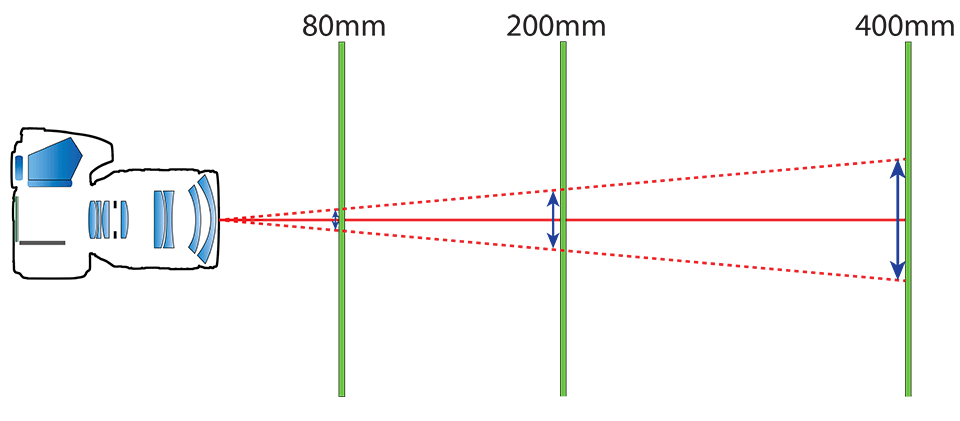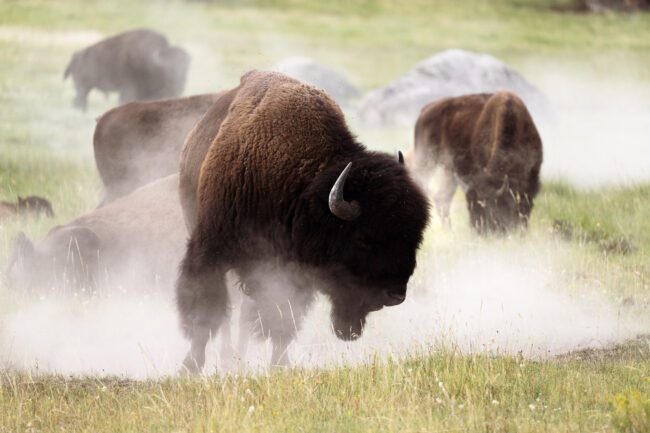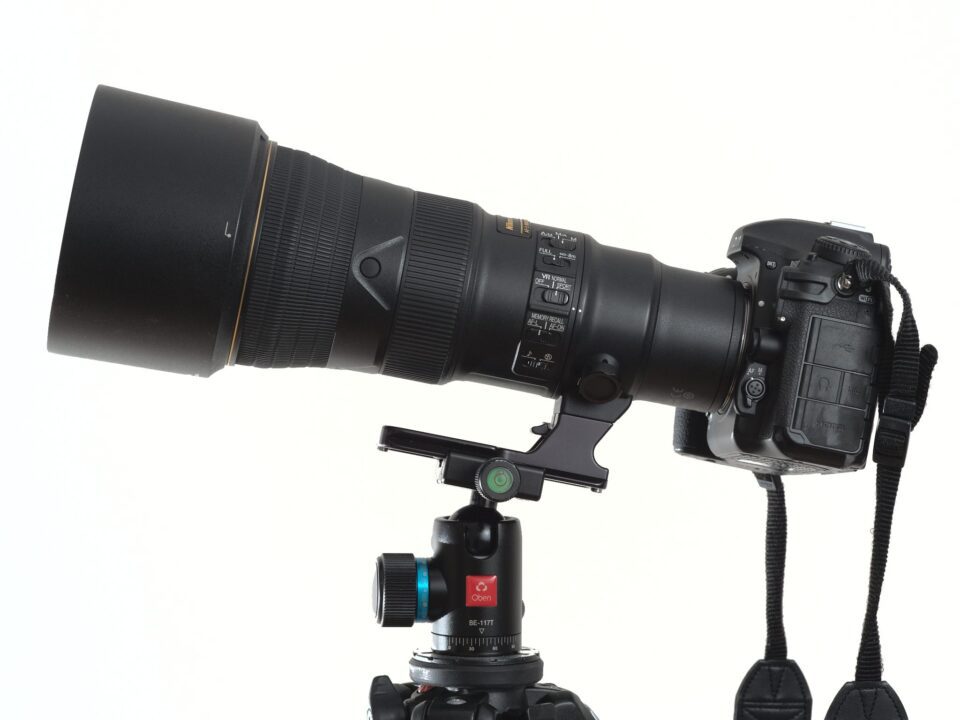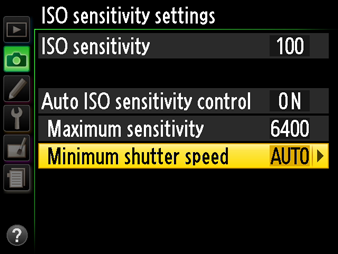Discover the power of the “Mean Reciprocal Rule” in photography and take your skills to the next level! Learn how to create perfectly exposed images with ease, by understanding the secret behind this essential technique. Don’t miss out on the opportunity to enhance your photography skills and impress your audience. Try it today and see the difference for yourself!
One of the biggest challenges in photography is sharp photos when hand-holding a camera. Many end up with blurry images without understanding the source of the problem, which is usually camera shake caused by basic improper hand-holding techniques or mirror and shutter-induced vibrations. The easiest way to compensate for this shake is to use the reciprocal rule, which tells you the minimum shutter speed that you should use.
That’s because the most common cause of camera shake is lower-than-acceptable shutter speed when hand-holding the camera. I will introduce and explain the reciprocal rule, which can help in greatly increasing the chances of getting sharp photos when you do not have a tripod around.

Sony A7R + FE 35mm f/2.8 ZA @ 35mm, ISO 100, 1/40, f/11 © Nasim Mansurov
What is the Reciprocal Rule?
Due to the fact that we as humans cannot be completely still, particularly when hand-holding an object like a camera, the movements caused by our bodies can cause camera shake and introduce blur to images. The easiest way to counter this is:
The Reciprocal Rule: the shutter speed of your camera should be at least the reciprocal of the effective focal length of the lens.
For example, if you are shooting with a 50mm lens, use a shutter speed of at least 1/50. Or, say you are shooting with a zoom lens like the Nikon 20-120mm f/4S lens on a full-frame camera. Now the rule says that if you are shooting at 80mm, your shutter speed should be set to at least 1/80th of a second, whereas if you zoom in to say 400mm, your shutter speed should be at least 1/400th of a second.
Using such fast shutter speeds helps prevent blur by camera shake. Why? Because there is a direct correlation between focal length and the effect of camera shake – longer focal lengths magnify camera shake. If you have a zoom lens like the above-mentioned Nikon 24-120mm lens, you have probably already noticed how much more shaky and jumpy your viewfinder looks at 120mm, compared to 20mm. That’s because camera movement is magnified at longer focal lengths:

The Reciprocal Rule and Motion Blur
The camera shake is not a motion blur. In other words, blur caused by camera shake is very different than motion blur (where the subject is faster than set shutter speed).
Motion blur typically happens when your subject is moving. In this case, even if you use the reciprocal rule, you still could get a blurry shot because your subject is moving very fast. For example, most birds in flight need at least a shutter speed of 1/2000 on a 500mm lens, whereas the reciprocal rule only recommends a minimum of 1/500.
It is also important to point out that the reciprocal rule only applies when hand-holding a camera. If your camera is on a sturdy tripod, then it is not shaking and so the reciprocal rule isn’t necessary.
Effective Focal Length
Please note that I used the word “effective focal length” in the definition and gave you an example with a full-frame camera. If you have a camera with a smaller sensor than 35mm or full-fame, you first have to compute the effective focal length, also known as “equivalent field of view”, by multiplying the focal length by the crop factor.
Example. If you use the same 80-400mm lens on a Nikon DX camera with a 1.5x crop factor and you are shooting at 400mm, your minimum shutter speed should be at least 1/600th of a second (400 x 1.5 = 600).
This is just an approximate rule of thumb, and it is used because crop sensor cameras often have higher pixel densities than full-frame cameras, so they show camera shake more readily. Of course, if you have a 50MP full-frame camera, it will show more camera shake at the pixel level than a 24MP full-frame camera, so it might be wise to also apply this rule for high-density sensors if you are a pixel peeper.
Exceptions and Notes to the Reciprocal Rule
Although it is commonly referred to as a “reciprocal rule”, it is not a rule per se but rather just a guidance for minimum shutter speed to avoid blur caused by camera shake.
In reality, how shutter speed affects camera shake depends on a number of different variables, including:
- The efficiency of your hand-holding technique: if you have a poor hand-holding technique, the reciprocal rule might not work for you and you might need to use faster shutter speeds. Gear and lenses vary in size, weight and bulk, so you might need to utilize specialized hand-holding techniques depending on what you are shooting. For example, check out this great article by Tom Stirr on hand-holding techniques for telephoto lenses.
- Camera resolution: Cameras today like the Nikon Z9 have more pixels crammed into the same physical space. Higher-resolution cameras will show more intolerance to camera shake than their lower-resolution counterparts. So, if you are dealing with a high resolution camera, you might need to increase your shutter speed to a higher value than what the reciprocal rule suggests.
- Lens quality / sharpness: you might have a high-resolution camera, but if it is not matched by a high-performing lens with great sharpness, you will not be able to yield sharp images, no matter how fast your shutter speed is.
- Subject size and distance: photographing a tiny bird from a long distance and wanting to have every feather detail preserved usually requires faster shutter speed than recommended by the reciprocal rule, especially if the subject needs to be tack sharp at 100% zoom.

Do You Need the Reciprocal Rule with Image Stabilization?
Most mirrorless cameras today come with image stabilization. Even if you are using a DSLR, many longer lenses have optical stabilization built-in!

The ceciprocal rule is often too conservative if your lens or your camera come with image stabilization (also known as “vibration reduction” or “vibration compensation”), because it effectively reduces camera shake by moving internal components of a lens or the sensor of the camera.
Modern image stabilization systems these days give between 4-7 stops of stabilization. And if you’re getting say, 5 stops of stabilization, that means that on a 100mm lens, instead of needing a shutter speed of 1/100, you might only need a shutter speed of 1/3! Of course, that assumes that your subject isn’t moving, because even slowly-moving subjects like turtles will cause blur at such low shutter speeds.

To take another example, the 80-400mm f/4.5-5.6G VR comes with image stabilization up to 4 stops of compensation, and so you could theoretically reduce the recommended shutter speed by reciprocal rule by up to 16 times!
So when shooting at 400mm, if your hand-holding technique was perfect and you turned image stabilization on, you could go from 1/400th of a second (reciprocal rule based on a full-frame camera) to 1/25th of a second and still be able to capture a sharp image of your subject (provided that your subject does not move at such long shutter speeds and cause motion blur). In such cases, the reciprocal rule simply does not apply.
If you’re relying on in-body image stabilization (IBIS), remember that it loses effectiveness at longer focal lengths. So, if you are using a camera with IBIS but your lens does not have in-lens stabilization, then you might not want to forget the reciprocal rule so quickly.
Applying Reciprocal Rule: Auto ISO
Many of the modern digital cameras come with a really neat feature called “Auto ISO“, which allows one to let the camera control camera ISO depending on light conditions. Some Auto ISO implementations are rather simplistic, letting the end-user specify only minimum and maximum ISO and giving little to no control on minimum shutter speed. Others will have more advanced Auto ISO features, allowing to specify not only ISO ceilings, but also what the minimum shutter speed should be before ISO is changed.
Nikon and Canon, for example, have one of the best Auto ISO capabilities in their modern mirrorless cameras – in addition to the above, minimum shutter speed can be set to “Auto”, which will automatically set the shutter speed based on the reciprocal rule:

One can even customize this behavior further, by changing the minimum shutter speed relative to the reciprocal rule. For example, on my Nikon D750 I can set the minimum shutter speed to “Auto,” then set the bar once towards “Faster,” which will speed up shutter speed based on the reciprocal rule.
So, if I am shooting at say 100mm focal length, the camera will automatically increase ISO once my shutter speed reaches 1/200th of a second. And if I use a stabilized lens and want my camera to have a longer minimum shutter speed, I can move the same bar towards “Slower,” using a longer minimum shutter speed guided by the reciprocal rule.
Of course, if you have set a minimum shutter speed, make sure to turn it off or switch to another mode when you don’t need it, such as when you are shooting on a tripod.
The Reciprocal Rule for Different Genres
The reciprocal rule is useful, but there are certain genres of photography where you still have to be careful and use a bit more planning instead of just relying on the reciprocal rule for your photography.
Landscape Photography
Landscape photography is often done on a tripod, so in dimmer light, it’s much better to set your camera to its base ISO and let the shutter speed be as long as possible.

Even if you’re not on a tripod, landscape photography often uses wider focal lengths, which are especially effective with IBIS in mirrorless cameras. So in many cases, you might not need the reciprocal rule. If you are shooting handheld with a DSLR, it’s still good to use the rule, however.
Portrait Photography
The reciprocal rule works well with portrait photography, where you are using longer focal lengths and natural light. However, portrait photographers often use flash.
In this case, if the majority of your light is coming from flash, then you can shoot at whatever shutter speed is required for the effect you need: a much lower shutter speed to “drag the shutter” if you want background light in, or a higher shutter speed of 1/200 to use only the light of the flash.

Wildlife and Sports
In wildlife in sports, your subject is typically always moving. In this case, you’ll pretty much always need to use a higher shutter speed than recommended by the reciprocal rule.

Macro
At close-up distances in macro photography, forget the reciprocal rule. The high magnification simply…magnifies camera shake! Thus, even with short focal lengths like 50mm, you still might need a higher shutter speed than 1/50 to get sharp shots, simply because you are so close!
A lot of macro shooters use flash because of this. Even if you can handhold macro shots, it still might be better to use flash because there is so little light in macro.
Conclusion
Even with today’s advanced cameras, the reciprocal rule is still useful, especially in those cases where you don’t have stabilization on your camera or on your lens. Even if you do, there ar some cases such as very long focal lengths where it can come in handy. Finally, remember that the reciprocal rule just recommends a minimum. You may still need to use a higher shutter speed for other reasons such as moving subjects.
Do you still keep the reciprocal rule in mind? If so, let me know in the comments!




